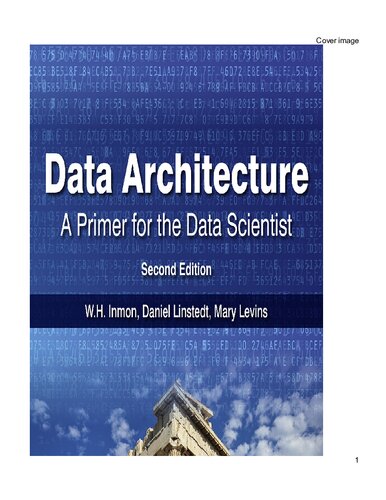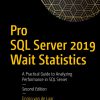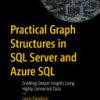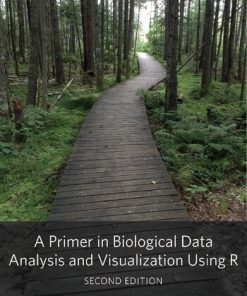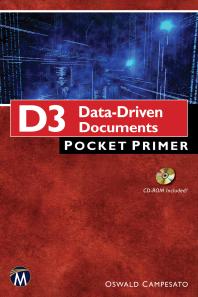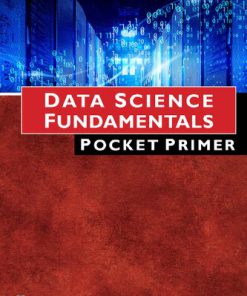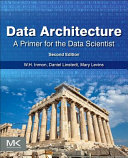Data Architecture A Primer for the Data Scientist A Primer for the Data Scientist 2nd Edition by WH Inmon 9781260588774 1260588777
$50.00 Original price was: $50.00.$25.00Current price is: $25.00.
Data Architecture A Primer for the Data Scientist A Primer for the Data Scientist 2nd Edition W.H. Inmon – Ebook Instant Download/Delivery ISBN(s): 9781260588774, 1260588777
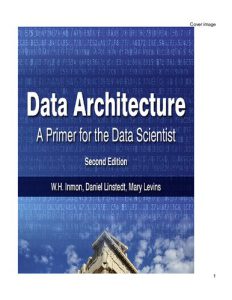
Product details:
- ISBN 10:1260588777
- ISBN 13:9781260588774
- Author: WH Inmon
Modern Compressible Flow: With Historical Perspective
Table contents:
Chapter 1 Compressible Flow—Some History and Introductory Thoughts
1.1 Historical High-Water Marks
1.2 Definition of Compressible Flow
1.3 Flow Regimes
1.4 A Brief Review of Thermodynamics
1.5 Aerodynamic Forces on a Body
1.6 Modern Compressible Flow
1.7 Summary
Problems
Chapter 2 Integral Forms of the Conservation Equations for Inviscid Flows
2.1 Philosophy
2.2 Approach
2.3 Continuity Equation
2.4 Momentum Equation
2.5 A Comment
2.6 Energy Equation
2.7 Final Comment
2.8 An Application of the Momentum Equation: Jet Propulsion Engine Thrust
2.9 Summary
Problems
Chapter 3 One-Dimensional Flow
3.1 Introduction
3.2 One-Dimensional Flow Equations
3.3 Speed of Sound and Mach Number
3.4 Some Conveniently Defined Flow Parameters
3.5 Alternative Forms of the Energy Equation
3.6 Normal Shock Relations
3.7 Hugoniot Equation
3.8 One-Dimensional Flow with Heat Addition
3.9 One-Dimensional Flow with Friction
3.10 Historical Note: Sound Waves and Shock Waves
3.11 Summary
Problems
Chapter 4 Oblique Shock and Expansion Waves
4.1 Introduction
4.2 Source of Oblique Waves
4.3 Oblique Shock Relations
4.4 Supersonic Flow Over Wedges and Cones
4.5 Shock Polar
4.6 Regular Reflection from a Solid Boundary
4.7 Comment on Flow Through Multiple Shock Systems
4.8 Pressure-Deflection Diagrams
4.9 Intersection of Shocks of Opposite Families
4.10 Intersection of Shocks of the Same Family
4.11 Mach Reflection
4.12 Detached Shock Wave in Front of a Blunt Body
4.13 Three-Dimensional Shock Waves
4.14 Prandtl–Meyer Expansion Waves
4.15 Shock–Expansion Theory
4.16 Historical Note: Prandtl’s Early Research on Supersonic Flows and the Origin of the Prandtl
4.17 Summary
Problems
Chapter 5 Quasi-One-Dimensional Flow
5.1 Introduction
5.2 Governing Equations
5.3 Area–Velocity Relation
5.4 Nozzles
5.5 Diffusers
5.6 Wave Reflection from a Free Boundary
5.7 Summary
5.8 Historical Note: De Laval—A Biographical Sketch
5.9 Historical Note: Stodola and the First Definitive Supersonic Nozzle Experiments
5.10 Summary
Problems
Chapter 6 Differential Conservation Equations for Inviscid Flows
6.1 Introduction
6.2 Differential Equations in Conservation Form
6.3 The Substantial Derivative
6.4 Differential Equations in Nonconservation Form
6.5 The Entropy Equation
6.6 Crocco’s Theorem: A Relation Between the Thermodynamics and Fluid Kinematics of a Compressible
6.7 Historical Note: Early Development of the Conservation Equations
6.8 Historical Note: Leonhard Euler—The Man
6.9 Summary
Problems
Chapter 7 Unsteady Wave Motion
7.1 Introduction
7.2 Moving Normal Shock Waves
7.3 Reflected Shock Wave
7.4 Physical Picture of Wave Propagation
7.5 Elements of Acoustic Theory
7.6 Finite (Nonlinear) Waves
7.7 Incident and Reflected Expansion Waves
7.8 Shock Tube Relations
7.9 Finite Compression Waves
7.10 Summary
Problems
Chapter 8 General Conservation Equations Revisited: Velocity Potential Equation
8.1 Introduction
8.2 Irrotational Flow
8.3 The Velocity Potential Equation
8.4 Historical Note: Origin of the Concepts of Fluid Rotation and Velocity Potential
Problems
Chapter 9 Linearized Flow
9.1 Introduction
9.2 Linearized Velocity Potential Equation
9.3 Linearized Pressure Coefficient
9.4 Linearized Subsonic Flow
9.5 Improved Compressibility Corrections
9.6 Linearized Supersonic Flow
9.7 Critical Mach Number
9.8 Summary
9.9 Historical Note: The 1935 Volta Conference—Threshold to Modern Compressible Flow with Associat
9.10 Historical Note: Prandtl—A Biographical Sketch
9.11 Historical Note: Glauert—A Biographical Sketch
9.12 Summary
Problems
Chapter 10 Conical Flow
10.1 Introduction
10.2 Physical Aspects of Conical Flow
10.3 Quantitative Formulation (After Taylor and Maccoll)
10.4 Numerical Procedure
10.5 Physical Aspects of Supersonic Flow Over Cones
Problems
Chapter 11 Numerical Techniques for Steady Supersonic Flow
11.1 An Introduction to Computational Fluid Dynamics
11.2 Philosophy of the Method of Characteristics
11.3 Determination of the Characteristic Lines: Two-Dimensional Irrotational Flow
11.4 Determination of the Compatibility Equations
11.5 Unit Processes
11.6 Regions of Influence and Domains of Dependence
11.7 Supersonic Nozzle Design
11.8 Method of Characteristics for Axisymmetric Irrotational Flow
11.9 Method of Characteristics for Rotational (Nonisentropic and Nonadiabatic) Flow
11.10 Three-Dimensional Method of Characteristics
11.11 Introduction to Finite Differences
11.12 Maccormack’s Technique
11.13 Boundary Conditions
11.14 Stability Criterion: The CFL Criterion
11.15 Shock Capturing versus Shock Fitting; Conservation versus Nonconservation Forms of the Equatio
11.16 Comparison of Characteristics and Finite-Difference Solutions with Application to the Space Sh
11.17 Historical Note: The First Practical Application of the Method of Characteristics to Supersoni
11.18 Summary
Problems
Chapter 12 The Time-Marching Technique: With Application to Supersonic Blunt Bodies and Nozzles
12.1 Introduction to the Philosophy of Time- Marching Solutions for Steady Flows
12.2 Stability Criterion
12.3 The Blunt Body Problem—Qualitative Aspects and Limiting Characteristics
12.4 Newtonian Theory
12.5 Time-Marching Solution of the Blunt Body Problem
12.6 Results for the Blunt Body Flowfield
12.7 Time-Marching Solution of Two- Dimensional Nozzle Flows
12.8 Other Aspects of the Time-Marching Technique; Artificial Viscosity
12.9 Historical Note: Newton’s Sine-Squared Law—Some Further Comments
12.10 Summary
Problems
Chapter 13 Three-Dimensional Flow
13.1 Introduction
13.2 Cones at Angle of Attack: Qualitative Aspects
13.3 Cones at Angle of Attack: Quantitative Aspects
13.4 Blunt-Nosed Bodies at Angle of Attack
13.5 Stagnation and Maximum Entropy Streamlines
13.6 Comments and Summary
Problems
Chapter 14 Transonic Flow
14.1 Introduction
14.2 Some Physical Aspects of Transonic Flows
14.3 Some Theoretical Aspects of Transonic Flows; Transonic Similarity
14.4 Solutions of the Small-Perturbation Velocity Potential Equation: The Murman and Cole Method
14.5 Solutions of the Full Velocity Potential Equation
14.6 Solutions of the Euler Equations
14.7 Historical Note: Transonic Flight—Its Evolution, Challenges, Failures, and Successes
14.8 Summary and Comments
Problem
Chapter 15 Hypersonic Flow
15.1 Introduction
15.2 Hypersonic Flow—What Is It?
15.3 Hypersonic Shock Wave Relations
15.4 A Local Surface Inclination Method: Newtonian Theory
15.5 Mach Number Independence
15.6 The Hypersonic Small-Disturbance Equations
15.7 Hypersonic Similarity
15.8 Computational Fluid Dynamics Applied to Hypersonic Flow: Some Comments
15.9 Hypersonic Vehicle Considerations
15.10 Historical Note
15.11 Summary and Final Comments
Problems
Chapter 16 Properties of High-Temperature Gases
16.1 Introduction
16.2 Microscopic Description of Gases
16.3 Counting the Number of Microstates for a Given Macrostate
16.4 The Most Probable Macrostate
16.5 The Limiting Case: Boltzmann Distribution
16.6 Evaluation of Thermodynamic Properties in Terms of the Partition Function
16.7 Evaluation of the Partition Function in Terms of T and V
16.8 Practical Evaluation of Thermodynamic Properties for a Single Species
16.9 The Equilibrium Constant
16.10 Chemical Equilibrium—Qualitative Discussion
16.11 Practical Calculation of the Equilibrium Composition
16.12 Equilibrium Gas Mixture Thermodynamic Properties
16.13 Introduction to Nonequilibrium Systems
16.14 Vibrational Rate Equation
16.15 Chemical Rate Equations
16.16 Chemical Nonequilibrium in High-Temperature Air
16.17 Summary of Chemical Nonequilibrium
16.18 Chapter Summary
Problems
Chapter 17 High-Temperature Flows: Basic Examples
17.1 Introduction to Local Thermodynamic and Chemical Equilibrium
17.2 Equilibrium Normal Shock Wave Flows
17.3 Equilibrium Quasi-One-Dimensional Nozzle Flows
17.4 Frozen and Equilibrium Flows: Specific Heats
17.5 Equilibrium Speed of Sound
17.6 On the Use of γ = cp∕cv
17.7 Nonequilibrium Flows: Species Continuity Equation
17.8 Rate Equation for Vibrationally Nonequilibrium Flow
17.9 Summary of Governing Equations for Nonequilibrium Flows
17.10 Nonequilibrium Normal Shock Wave Flows
17.11 Nonequilibrium Quasi-One-Dimensional Nozzle Flows
17.12 Summary
Problems
Appendix A
Table A.1 Isentropic Flow Properties
Table A.2 Normal Shock Properties
Table A.3 One-Dimensional Flow with Heat Addition
Table A.4 One-Dimensional Flow with Friction
Table A.5 Prandtl–Meyer Function and Mach Angle
Appendix B An Illustration and Exercise of Computational Fluid Dynamics
The Equations
Intermediate Numerical Results: The First Few Steps
Final Numerical Results: The Steady-State Solution
Summary
Isentropic Nozzle Flow—Subsonic/Supersonic (Nonconservation Form)
Appendix C Oblique Shock Properties: γ = 1.4
References
Index
Read More
People also search:
data architecture a primer for the data scientist
data architecture a primer for the data scientist pdf
data scientist vs data architect salary
what is data science architecture
purpose of data architecture
You may also like…
Computers - Programming
Computers - Programming
Python and R for the Modern Data Scientist: The Best of Both Worlds 1st Edition Scavetta
Biology and other natural sciences
Uncategorized
Uncategorized
D3 Data Driven Documents Pocket Primer 1st Edition by Oswald Campesato 1942270690 9781942270690
Computers - Programming
Data Science Fundamentals Pocket Primer 1st Edition Oswald Campesato
Computers - Computer Science
Science (General) - Research & Development
Computers - Databases

